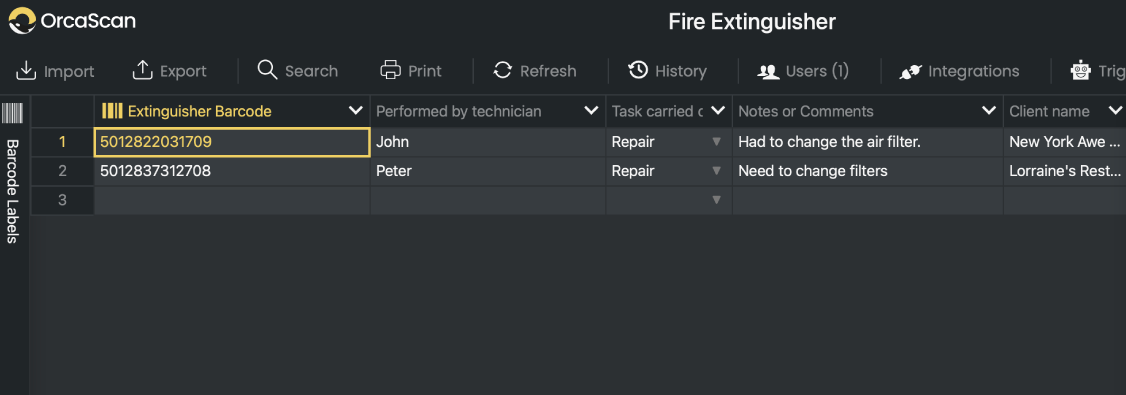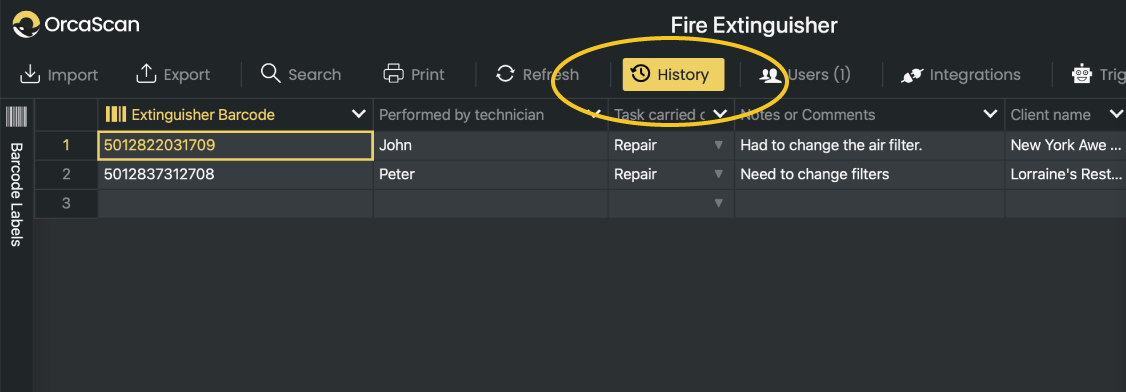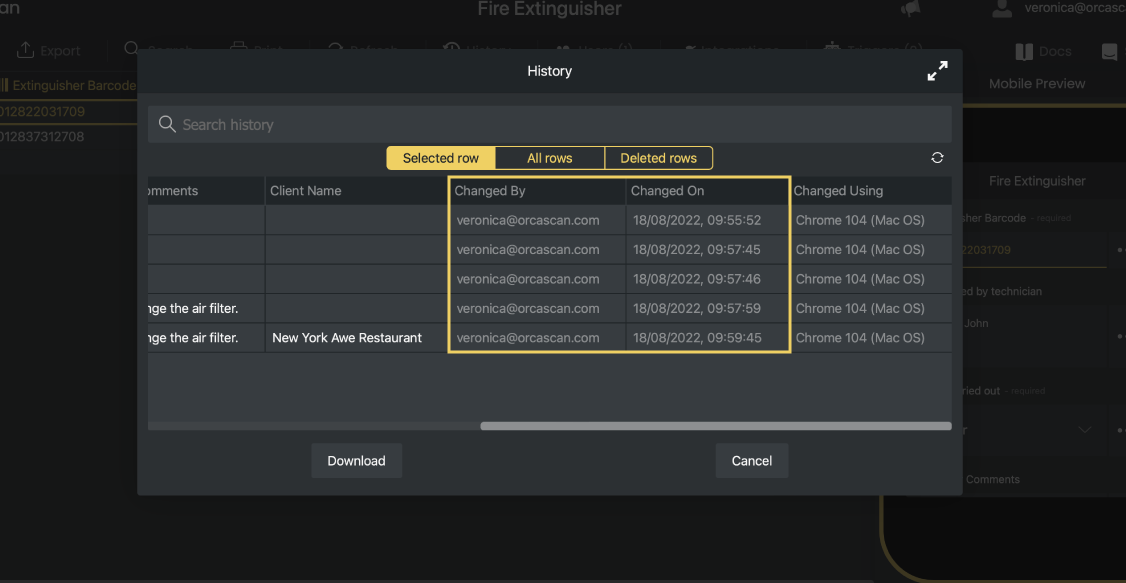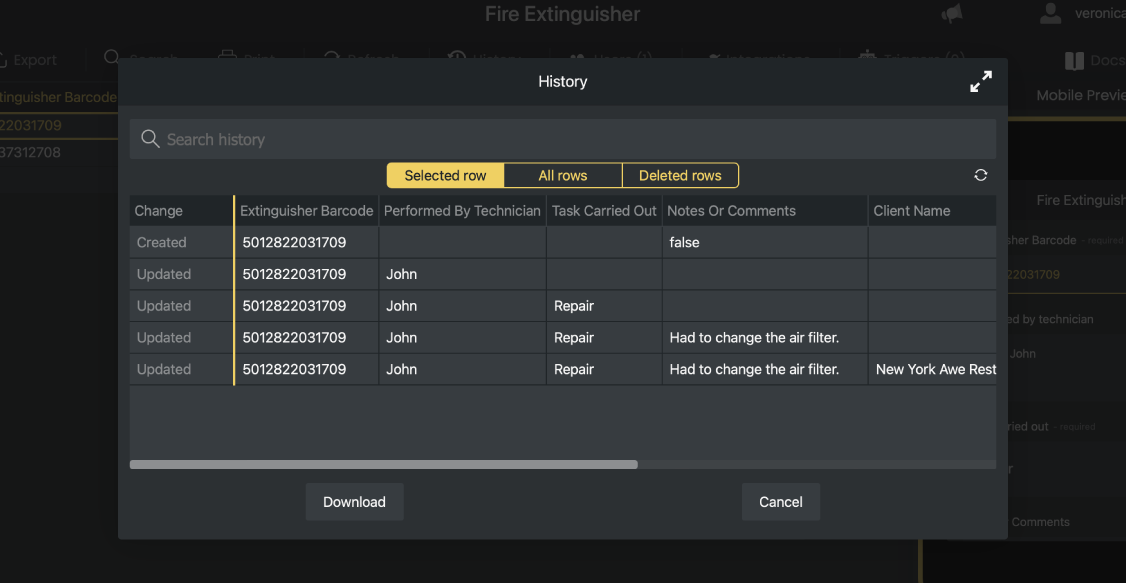Audit trails provide an electronic record of historical activities, which is invaluable for tracking assets, performing compliance inspections, or conducting preventative maintenance on equipment.
A robust audit trail logs when an activity occurred, what was done, and who performed the action. With Orca Scan, this information is automatically recorded.
Log in to your Orca Scan account to view the history log for each of your items.
How the history log works
The main view in your Orca Scan Cloud sheet shows the current status of all items and last changes made - that could be the last location an item was scanned, the current stock level or in the case below, the latest servicing of industrial machines.

For a more detailed view, click the History button in the toolbar. This allows you to select a specific item and view a chronological record of all checks, servicing and repairs.

Whenever a barcode is scanned, the history log automatically creates records that include:
- The action performed (e.g., item created, updated)
- The timestamp of the scan and update
- The user ID and device used for the action

If you move a row (item) between different sheets, the complete history of that item is carried with it. This ensures that no historical data is lost during transfers, maintaining a comprehensive audit trail across all your sheets.
How to View the History Log for an Item in the Mobile App
In the Orca Scan mobile app, you can view the history log for a specific item with just a few taps.
- Open the Orca Scan mobile app.
2.Long-press the item in the list you want to view.
- Select View History from the menu.
Key Benefits of Audit Trails
Audit trails offer several key benefits, each contributing to better transparency and accountability in your business.
1. User accountability
Just by communicating the implementation of an audit trail every user will be aware that their actions are being logged against their identity.
We see many companies that reduce employees waste and reckless use of equipment by having them scan an asset tag with their mobile device and record their activities.
2. Traceability and loss prevention
With a detailed record of each asset’s location, who last handled it, and when it’s due for return, it’s easy to trace the asset’s history. This ongoing tracking process can also reduce the need for comprehensive audits, especially when combined with efficient bulk inventory updates.
3. Improved equipment maintenance
When carrying out maintenance regularly on a piece of equipment to lessen the likelihood of failure, it’s crucial to record the servicing and any problems with the equipment to identify patterns of failure. For insured machines, these records often provide the necessary documentation for insurance claims.

Questions about the audit trials?
We’re always happy to help, chat with us live or drop us an email.
